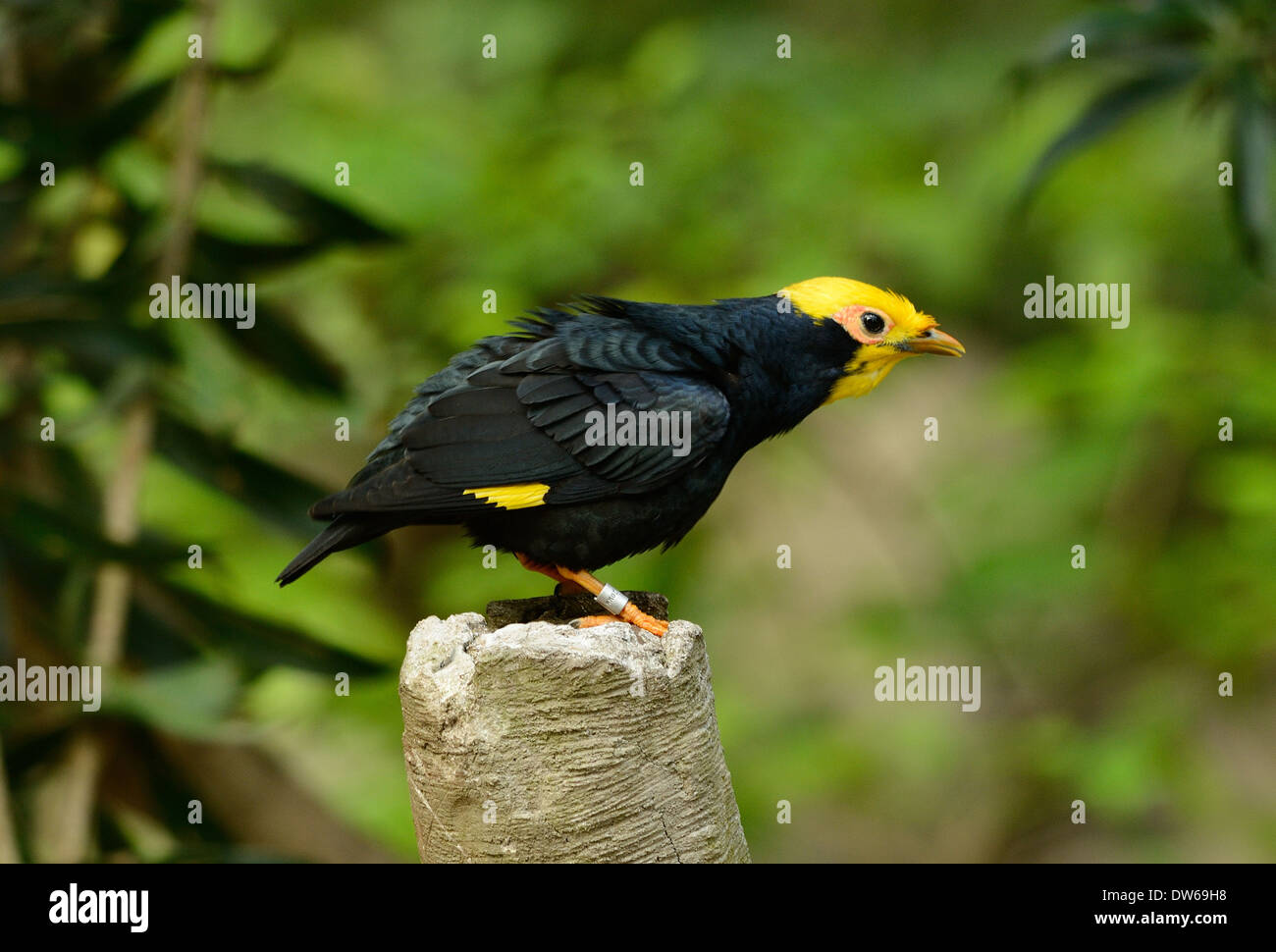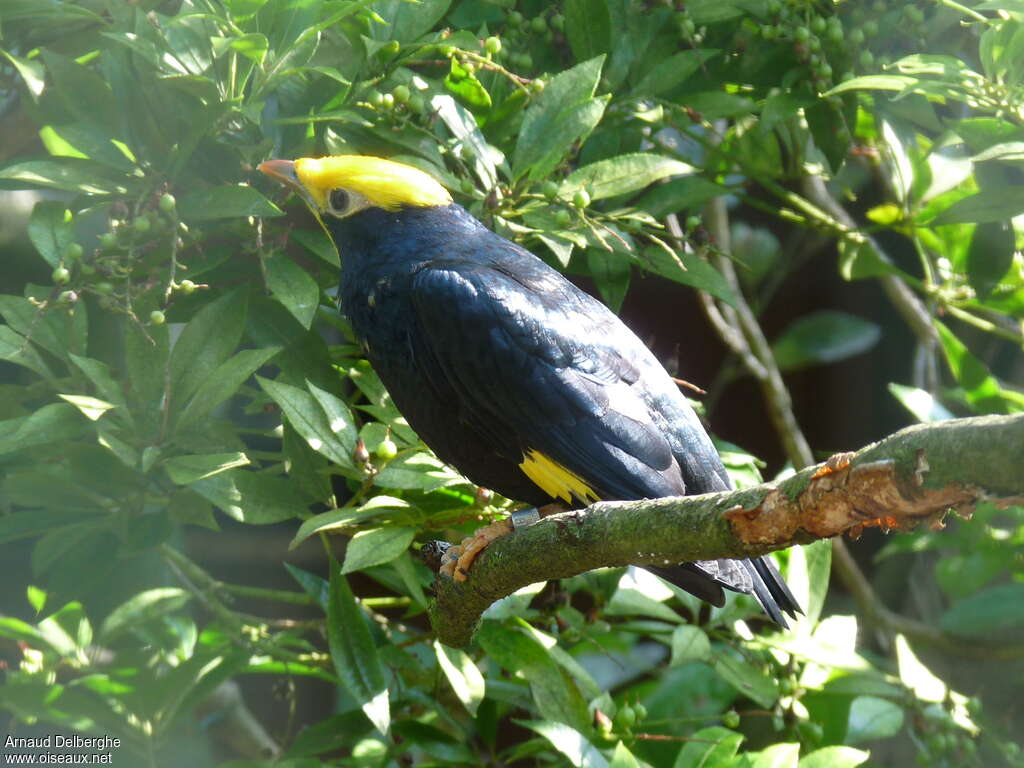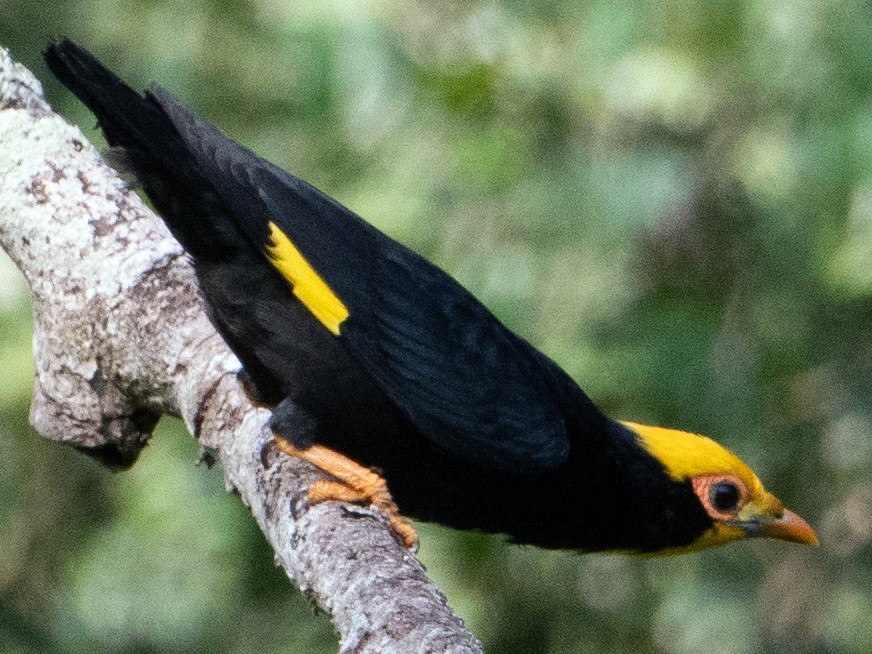The Golden-crested Myna: A Jewel Of Southeast Asia
Share
The Golden-Crested Myna, scientifically known as Ampeliceps coronatus, is a striking bird belonging to the family Sturnidae within the order Passeriformes. This species is renowned for its vibrant plumage and unique behaviors, making it a fascinating subject for birdwatchers and ornithologists alike. In this article, we will explore the taxonomy, physical characteristics, habitat, diet, behavior, reproduction, and conservation status of this remarkable bird.
Taxonomy
The Golden-Crested Myna was first described by Edward Blyth in 1842. It falls under the suborder Oscines and the subfamily Sturninae. The type specimen was identified in Tenasserim, and it is also associated with the earlier classification by Mino Lesson in 1827. The species is monotypic, meaning it does not have any recognized subspecies.
Physical Characteristics
The Golden-Crested Myna is easily identifiable by its striking appearance. The most notable feature is its golden-yellow crest, which stands out against its dark plumage. The body is predominantly black with hints of iridescent blue and green, particularly on the wings and tail. Adult males and females exhibit similar coloration, although males tend to be slightly larger.

Habitat
This species is primarily found in Eastern India, particularly in eastern Bengal and Assam, as well as in Burma (Myanmar), Indo-China, and Thailand, extending south to Trang Province. The Golden-Crested Myna prefers forested areas, including subtropical and tropical moist lowland forests, where it can find ample food and nesting sites.

Diet
The diet of the Golden-Crested Myna is omnivorous, consisting of a variety of food sources. It primarily feeds on fruits, insects, and small invertebrates. The bird is known to forage in trees and on the ground, using its strong beak to extract food from crevices and foliage. This adaptability in diet allows it to thrive in diverse environments.

Behavior
Golden-Crested Mynas are social birds, often seen in small flocks. They are known for their vocalizations, which include a range of whistles and calls that can be heard throughout their habitat. These birds are also quite curious and may approach humans, making them a delight for birdwatchers. Their behavior is characterized by playful interactions, especially during the breeding season.

Reproduction
The breeding season for the Golden-Crested Myna typically occurs during the warmer months. They build their nests in tree cavities or other sheltered locations, using twigs, leaves, and other plant materials. The female usually lays a clutch of 2-4 eggs, which both parents help to incubate. After hatching, the chicks are fed by both parents until they are ready to fledge.
Conservation Status
Currently, the Golden-Crested Myna is not considered endangered, but habitat loss due to deforestation and urbanization poses a threat to its population. Conservation efforts are essential to ensure that this beautiful species continues to thrive in its natural habitat.
Final Thoughts
The Golden-Crested Myna is a captivating bird that plays a vital role in its ecosystem, particularly in seed dispersal and insect control. For birdwatchers looking to observe this species, the best locations are in its natural habitats across Eastern India, Burma, and Southeast Asia. With its stunning appearance and engaging behavior, the Golden-Crested Myna is truly a jewel of the avian world, reminding us of the beauty and diversity of nature.
